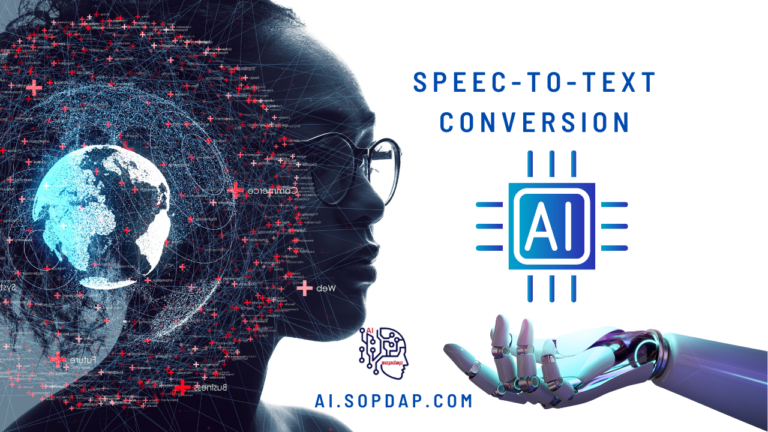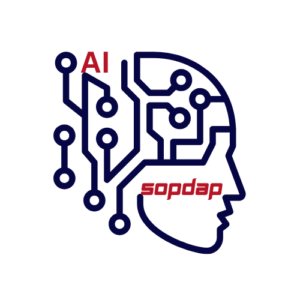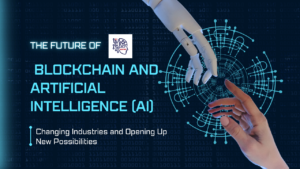Introduction to ASR:
Speech-to-text conversion, also known as automatic speech recognition (ASR), is a rapidly advancing technology that enables the conversion of spoken language into written text. It has gained significant attention and utilization across various domains, including telecommunications, transcription services, virtual assistants, language translation, and accessibility for individuals with hearing impairments. This technology has the potential to revolutionize the way we interact with devices and bridge the communication gap between individuals who use different languages or have difficulties with written communication.
The ability to convert spoken language into written text has been a long-standing goal in the field of computer science and natural language processing. Over the years, significant progress has been made in developing ASR systems that can accurately transcribe speech, thanks to advancements in machine learning, deep learning, and the availability of large-scale speech datasets.
Early ASR systems relied on rule-based approaches and acoustic modeling techniques, which required extensive manual effort in designing linguistic rules and creating language models. However, these systems often struggled to handle the complexity and variability of natural language, resulting in limited accuracy and practicality.
With the advent of machine learning and deep neural networks, there has been a paradigm shift in ASR research. Modern ASR systems employ data-driven approaches, where large amounts of labeled speech data are used to train neural network models. These models, known as acoustic models, learn to map acoustic features of speech to corresponding text outputs. In addition, language models are used to capture the contextual dependencies and improve the accuracy of the transcriptions.
The availability of vast amounts of multilingual and multitasking training data, along with the computational power of modern hardware, has significantly improved the performance of ASR systems. Today, state-of-the-art ASR systems achieve high accuracy levels, rivaling human transcriptionists in some scenarios. However, challenges still exist, especially in handling noisy environments, diverse accents, and speech with limited contextual cues.
Furthermore, the widespread adoption of ASR technology has raised concerns regarding privacy, data security, and ethical implications. As speech data is collected and processed by ASR systems, ensuring the protection of user privacy and preventing misuse of sensitive information becomes crucial.
This article aims to contribute to the field of speech-to-text conversion by exploring and addressing some of the existing challenges. The primary objectives include enhancing the accuracy and robustness of ASR systems, developing techniques for handling diverse languages and accents, investigating methods for improving performance in noisy environments, and considering the ethical implications of deploying ASR technology.
By advancing the state of the art in ASR, this resource seeks to unlock new possibilities for efficient and accurate speech-to-text conversion, enabling improved accessibility, communication, and information retrieval across various domains.
Review of Existing ASR:
Automatic Speech Recognition (ASR) systems have undergone significant advancements in recent years, thanks to the development of various algorithms and models. This review provides an overview of the research and developments in ASR algorithms and models, highlighting key techniques and their impact on speech recognition accuracy.
1. Hidden Markov Models (HMMs):
1.1 Definition and Usage:
Hidden Markov Models (HMMs) have been extensively used in ASR systems. HMMs are statistical models that represent the temporal dynamics of speech, capturing the transitions between different phonetic units. They are widely used for acoustic modeling in ASR, providing a framework to model speech features and estimate the most likely sequence of phonetic units.
1.2 Contributions and Limitations:
HMM-based ASR systems have achieved significant success, especially in large vocabulary continuous speech recognition (LVCSR). However, HMMs suffer from limitations, such as their inability to model long-term dependencies in speech and their assumption of independence between acoustic observations.
2. Deep Neural Networks (DNNs):
2.1 Introduction and Application:
Deep Neural Networks (DNNs) have revolutionized ASR by offering superior performance over traditional HMM-based systems. DNNs are deep learning architectures that consist of multiple layers of artificial neurons, enabling the learning of hierarchical representations of speech features.
2.2 Contributions and Advancements:
DNN-based acoustic modeling has shown remarkable improvements in ASR accuracy. The use of deep learning allows DNNs to capture intricate patterns and dependencies in speech data, leading to better discrimination between phonetic units. Techniques such as deep belief networks (DBNs) and long short-term memory (LSTM) networks have further enhanced the performance of DNN-based ASR systems.
3. Connectionist Temporal Classification (CTC):
3.1 Definition and Applications:
Connectionist Temporal Classification (CTC) is a framework for training sequence-to-sequence models without the need for alignment between input and output sequences. CTC has gained popularity in ASR for its ability to directly model the mapping from acoustic features to sequence outputs, such as phoneme sequences or word sequences.
3.2 Contributions and Benefits:
CTC-based ASR models have demonstrated promising results in various speech recognition tasks. CTC allows for end-to-end training, eliminating the need for explicit alignment information and simplifying the modeling process. It is particularly useful in scenarios where transcriptions are unavailable or expensive to obtain.
4. Transformer-based Models:
4.1 Introduction and Significance:
Transformer-based models, initially introduced in natural language processing, have gained attention in ASR due to their ability to model long-range dependencies in speech data. Transformers leverage self-attention mechanisms to capture global contextual information efficiently.
4.2 Advancements and Performance:
Transformer-based ASR models have achieved state-of-the-art performance in several benchmarks. Their self-attention mechanisms enable the modeling of long-term dependencies, making them suitable for capturing context in speech recognition tasks. Techniques like Conformer architectures and transformer-based language models have further improved ASR accuracy.
Read More: AI and Blockchain: Unlocking New Possibilities
Conclusion:
ASR algorithms and models have evolved significantly, with a shift from traditional HMM-based systems to deep learning architectures like DNNs and transformer-based models. These advancements have led to substantial improvements in ASR accuracy, enabling better speech recognition performance in various applications. It is important for researchers to explore and develop novel algorithms and models to further enhance ASR technology and address remaining challenges.




